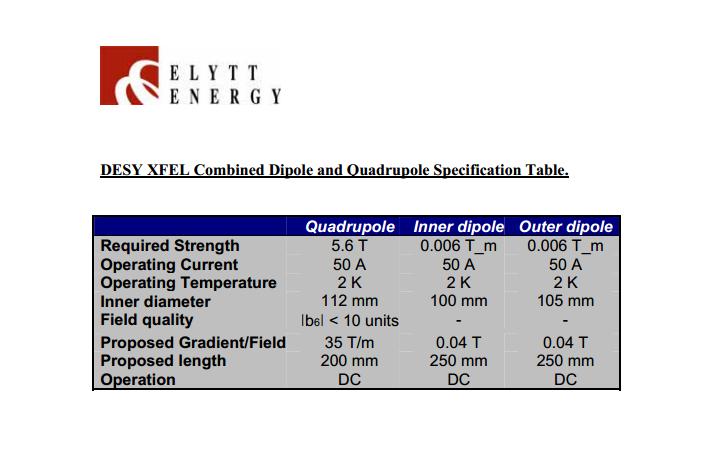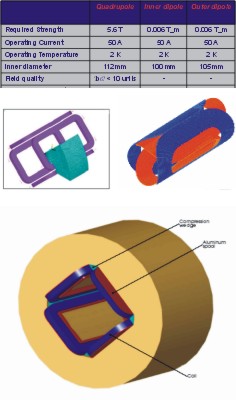DESY. XFEL Sup Dip&Quad
ELYTT ENERGY has designed for DESY a combined quadrupole and dipole.
German Government, in collaboration with other European partners as Spain, pretends the installation of a superconducting linear accelerator of electron-positron of 500 GeV. It is intended to prove the technology to be used in the linear accelerator at another installation called XFEL. XFEL (X Ray Free Electron Laser) is a free electron laser x ray installation projected by TESLA, based in superconducting radiofrequency cavities technology. Besides, the installation will be composed by periodic beam focusing and guiding devices.
Despite that a cos Q magnet solution was considered, some modifications done at the installation make the use of a superferric solution more suitable.
The basic magnet structure is based on a initial design of TTF (Tesla Test Facility), developed by DESY to verify the Basic structure of TESLA. This magnet arrangement uses a superferric solution to implement a device relatively simple. A later analysis showed that the integrated gradient provided by this solution is far away from being enough for TESLA 500. Therefore, it had to be designed and manufactured a higher complicated design based on cos ? to accomplish the specifications.
For XFEL, the need of a lower value of the integrated gradient, allows considering the superferric solution. Nevertheless, the previous values of TTF must be increased, specially due to the smaller available space for the magnet caused by a bigger dimension BPM as result of new design.
We think that the aim of the study developed by ELYTT ENERGY has been got. The quadrupole gradient has been increased from 20T/m to 35T/m, and the dipoles can be integrated in the available space.

SCOPE
ELYTT ENERGY developed the following works:
- Design.
- Quadrupole Design
- Quadrupole 2D design.
- MMF needed and coil preliminary design.
- Pole face design.
- Quadrupole 2D FEM analysis.
- Superconducting operation range calculation.
- Lorenz force calculation at coils.
- Quadrupole 3D design.
- Correcting Dipole design
- Dipole 2D design.
- General design and coil calculation.
- Iron non linear calculations
- Dipole forces calculations.
- Dipole 3D design.
- Quench protection design for the superconducting cable.
- Cable analysis and MIIT curves.
- Protection scheme analysis for energy extraction.
- Quench propagation analysis.
- Mechanical design and technological analysis.
- Dipole and quadrupole manufacturing and integration analysis.
- Quadrupole Design

